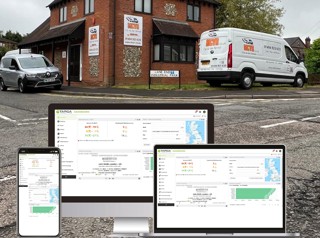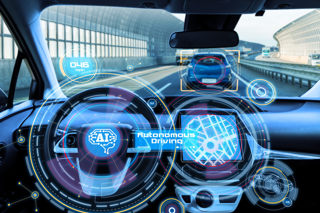Third-party systems – common throughout the logistics industry – can now be accessed through a van’s built-in display, says VNC Automotive.
Its Cobalt Cube product enables the secure integration of multiple devices with a vehicle’s existing displays and controls, removing the need for bulky aftermarket hardware and screens.
iOS and Android smartphone-based apps can be integrated as well, with the aim of making it easier to access information such as consignment notes or next drop location.
“Many fleets have developed smartphone apps to act as the main point of interaction for their drivers,” said Peter Galek, product engineering director at VNC Automotive.
“That isn’t necessarily the best device for many day-to-day functions; the small screen creates limitations, and they’re often dropped, damaged or lost.
“Using Cobalt Cube, however, makes it possible to capitalise on the ergonomically-optimised display that’s already fitted to the vehicle.”
The system is well-proven, having been integrated into police force and first responder vehicles around the globe, while the company’s connectivity technology can be found in more than 35 million vehicles worldwide.
By embedding Cobalt Cube, it says that vehicle manufacturers can embrace the boom in touchscreens in LCVs and add significant value for their fleet customers.
With Cobalt Cube, the groundwork has also been laid for integrating systems such as Lightfoot with the vehicle’s built-in display where it could also join the company’s logistics application, for example, potentially eliminating the need for the driver to use a smartphone at all.

Cobalt Cube’s software configuration can be customised to suit almost any requirement, but this flexibility also simplifies the integration for the manufacturer, it says.
Each vehicle can be assembled to the same standardised specification, leaving the customer or their service integrator to upload the software required for that particular unit’s role, whether that’s a last-mile courier, utility engineer, or chilled supermarket delivery.
“We’ve worked with OEMs, fleets and integrators around the world for many years, so we already have the expertise and experience required to link these systems together to ensure they perform seamlessly and flawlessly,” continued Galek.
“Now that LCVs’ connectivity has caught up with passenger cars, there’s an opportunity to take it to the next level and use that technology to make our hard-working van drivers’ lives easier and safer. After the support they’ve shown us, they certainly deserve it.”
VNC Automotive technology is currently in use in over 35 million vehicles, across 20 of the world’s largest automotive OEMs, including VW Group, Toyota, Honda, PSA.























Login to comment
Comments
No comments have been made yet.